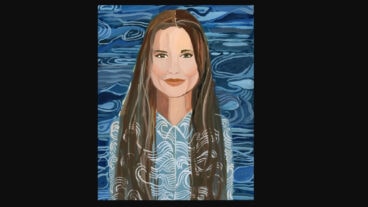A career in music gave way to a career in animation for Israeli Shahar Levavi, who was part of the team that created the groundbreaking movie Avatar.
What do you do if you’ve devoted your life to music and suddenly discover you love something else more? If you’re Shahar Levavi, you scrap your promising career in jazz for one in computer graphics.
But think twice before trying this at home, because the end result may not be as successful for you as it has been for the 34-year-old Levavi, whose latest accomplishment was being part of the crack animation team that created the groundbreaking computer-aided animation in James Cameron’s epic Avatar.
Yes, those tailed, lizard-like species of humanoids called the Na’vi that populate the planet of Pandora in Cameron’s epic science fiction extravaganza, which has become the “must see” film of the young year and is breaking box office records around the world, may have a little of that Israeli swagger if you look closely.
“I worked on just about every character in the film, except for two,” said Levavi on Monday, back in Israel after spending the previous 11 years perfecting his craft first in the US and for the last three years in New Zealand, where he signed onto Avatar.
“I thought it would be fun to work there and sent my portfolio to Peter Jackson’s studio, WETA Digital, in Wellington, where he had made The Lord of the Rings and King Kong,” said Levavi, who had previously animated films in New York and Los Angeles, including The Chronicles of Narnia, Charlotte’s Web and Garfield.
“I knew that James Cameron was planning to use the studio to produce Avatar. But I was applying to the studio, not to Cameron or the film. When I started, I worked on other projects, but then Avatar took over our lives for almost three years.”
A 3-D landscape of ornate forests and luminous mountains
Levavi was referring to the some three dozen other animators on the staff, who painstakingly created a 3-D landscape of fantastically ornate forests, luminous mountains and goosebump-inducing, giant, blue-skinned computer-generated creatures.
The $400 million production, the most expensive in film history, according to many reviews and comments by attendees, represents a historic achievement in movie animation.
One reviewer wrote: “It’s not exactly on the same level as Walt Disney’s groundbreaking Snow White and the Seven Dwarfs, but, after 19 years, Avatar finally fulfills the primitive promise of Jumanji that computer-generated characters interacting with regular human performers would be the way of cinema’s future.”
According to Levavi, it was the teamwork of the animation staff, along with Cameron’s cinematic vision, that helped Avatar set a new visual standard.
“We’d take the shots Cameron sent us and divide them between the different animators. We weren’t really assigned particular characters, we were working on shots, with whoever was in that shot. Of course, some animators might have different skills, and be better for instance in fighting sequences, so they’d get more of those shots,” he said. “Overall, I worked on just about every character in the film, save for one or two.”
From jazz composition to animation
It was quite a heady culmination of an upward spiraling career that began only after the native of Koranit, a small moshav in the North, earned his masters in digital imaging from NYU in 2004. Especially since until that time he had concentrated on another artistic field – music. “I had been into music all through my childhood,” said Levavi.
After attending high school at the Rimon School and doing his army service, Levavi was accepted to the Berkelee School of Music, where he earned a degree in jazz composition.
“Right around that time, I got introduced to the world of 3-D animation by a friend who was working in the field. I had always been interested in animation and computer graphics, but had always invested all my time in being a musician,” said Levavi. “Slowly, I learned all about computer animation and began acquiring the software and tools I needed. It took about a year until I felt comfortable with it, enough to apply to NYU. Then one thing led to another.”
For someone who had devoted his whole life to music, Levavi was surprisingly able to put it on the back burner, mainly because he found something he was more passionate about.
“I never really missed music, because I never really loved it. To this day, I still enjoy playing music and writing music as a hobby, and I actually enjoy it much more now since there’s no pressure to make money from it,” he said. “Animation is my work though, and I love it more than music. Music never really left my life, though. My wife, Ayelet Gottleib, is a jazz singer and performer, so when we were living in New York, we were always surrounded by musicians.”
Levavi explained that the two disciplines, although seemingly not sharing any common ground, actually were not that different from each other in some aspects.
Improvisation matters
“For me there are strong similarities between creating animation and music. There’s the whole concept of improvising. I played mostly jazz and there’s that element of how to reach a point from start to finish that is almost the same thought process as in animation, at least for me,” he said.
“I found the transition from music to animation quite easy. Composing an animation shot or composing a piece of music is not that different. I just had to learn all these new tools in order to do it.”
Those tools led him to the most talked-about Hollywood movie in recent years. But despite being integrally involved in the scenes and characters, due to the non-sequential manner of work involved, Levavi had no idea what the film was going to look like, even after he had completed his portion of it.
“When you start working on something like that, you are only exposed to small parts of the film. Only after a couple years did we start seeing some final footage – most of the time we were working on plate holder rough cuts. It’s difficult to judge what it’s going to look like, but as we got closer to the end, it started looking better and better,” said Levavi. “We didn’t work on the film sequentially either, so we weren’t sure how all the pieces were going to be put together.”
The crew watched the final cut of the film only a few days before its debut in mid-December. Levavi’s reaction? “The first time we saw Avatar from start to finish, we were all totally blown away.”
Despite having been part of the creation of a new gold standard for computer-generated films, Levavi thought there would always be a place for old fashioned, conventional animation. “Avatar belongs to a different genre, I think. It’s not competing with Pixar or Dreamworks,” he said.
Playing by the rules of physics
“The shots in Avatar are as real as we could possibly make them. You don’t see characters stretch their arms or bend them in a funny, unnatural angle, like you would see in a cartoon. A lot of the animation in Avatar is based on motion capture technology, which builds on the actions and motions of actors. In a Pixar movie, the animator can do whatever he wants and break whatever rules of physics he wants. It looks different, and feels different.”
Levavi is feeling somewhat different these days, since in the month since work on Avatar ended, he and Gottleib have made the jump and returned to live in Israel.
“We never left the country to stay away, we always knew we’d be back one day. We have our family and friends here. And no matter what, even with eight years in the US and three in New Zealand, you never feel completely at home like you do in Israel,” he said.
While the animation industry in Israel has evolved extensively during his 11 years abroad, Levavi isn’t sure what the future holds for him post-Avatar.
“I can see possibly going for a few months here and there back to work on films. It’s very difficult to work remotely on big Hollywood productions – they want you there,” he said.
“I hadn’t paid much attention to the animation industry in Israel before I left or while I was gone. But it seems like, as an outsider, there are some beautiful things going on here in animation and I’m optimistic for it – and for me.”
Printed by courtesy of The Jerusalem Post.











